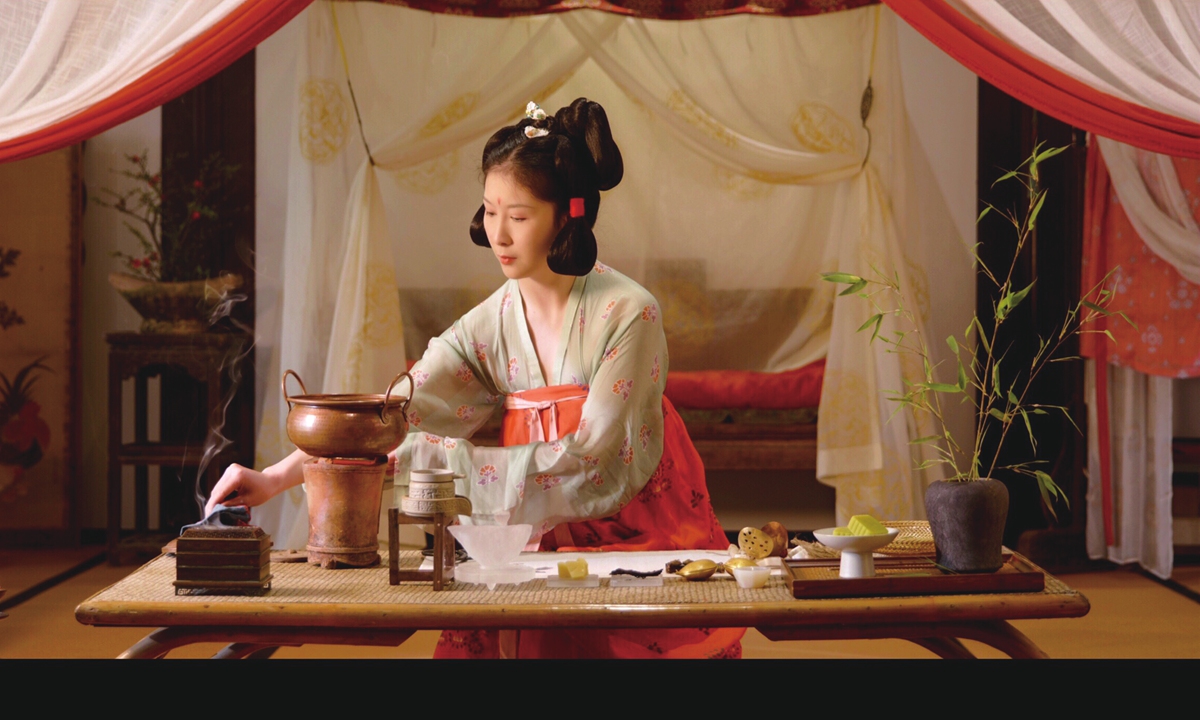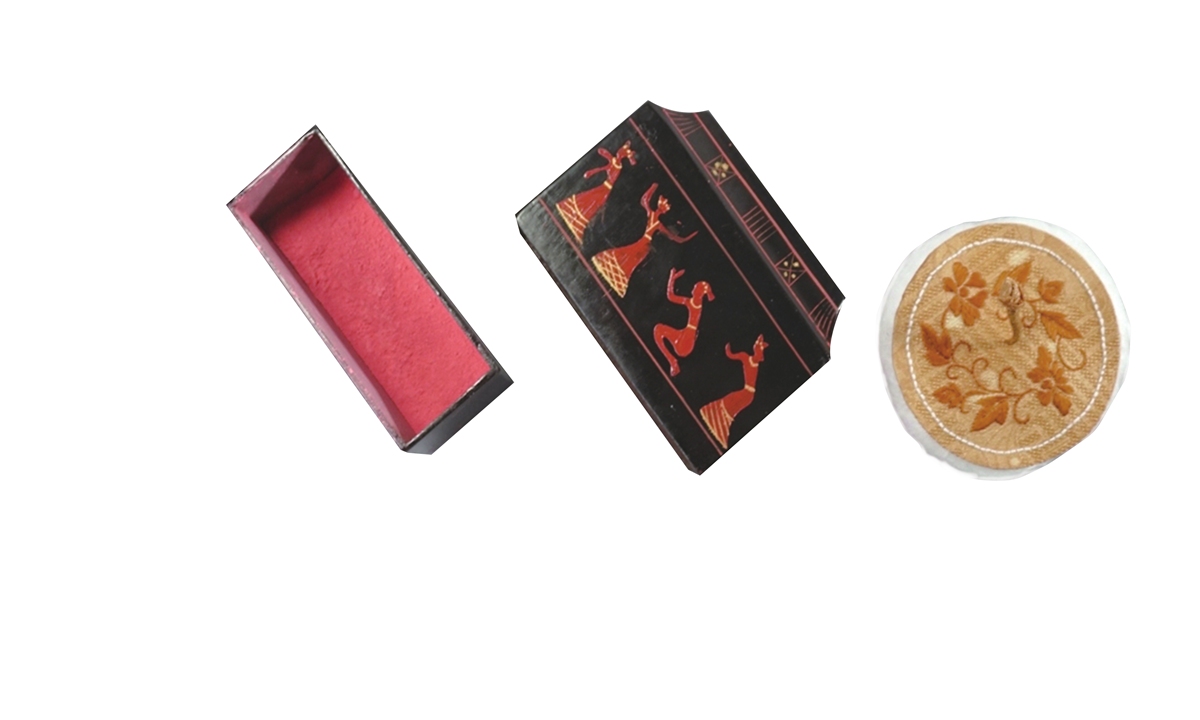
Wang Yifan Photo: Courtesy of Wang Yifan

The makeup tools restored by Wang Yifan Photo: Courtesy of Wang Yifan
Red lips, white skin… the trend of perusing the makeup used by Chinese women during different dynasties has been emerging recently. But what did Chinese women use for makeup thousands of years ago?
By examining references in ancient books, Wang Yifan, a 29-year-old woman from Northeast China's Liaoning Province, has recovered 39 types of cosmetics and makeup tools from China's different dynasties including a powder used by Wu Zetian, China's only female emperor, during the Tang Dynasty (618-907) and bath beans, a type of facial cleanser used by the Empress Dowager Cixi in the Qing Dynasty (1644-1911).
From hobby to occupation Wang has expressed a strong interest in cosmetics since she was a child. She enjoyed spending time with her grandfather, who once studied medicinal incense and knew the formulas of some ancient cosmetics, and was also familiar with basic techniques such as extracting plant pigments. They often made rouge and nail polish themselves.
However, this special hobby didn't become her official career until after she got married and moved to Shanghai with her husband.
"In my hometown, nobody would think that restoring ancient makeup could be a way to make a living. But in this big city, I saw many people were doing some 'interesting' jobs and are able to live well, which made me decide to pick my hobby up as a job," said Wang.
After making the decision, Wang paid a visit to a professor with the Shanghai Theater Academy who wrote a book about ancient makeup and also studied modern cosmetics at an Australian natural beauty laboratory based in China.
"By learning how to make modern cosmetics, I discovered a new understanding of ancient Chinese cosmetics, and I also realized the significance of what I was doing: Restoring ancient makeup is not only simple restoration, I also want to further improve these formulas by taking their essence and removing the dross to better provide high-quality cosmetics for future generations," she said.
Currently, Wang's recovered cosmetics cannot be sold, they are just for display as they still need further refinement.
"If we only inherit while do not progress, fewer people today will do this kind of ancient makeup restoration, let alone the next generation," she added.
A turbulent recovery
According to Wang, due to the idea that "men are superior to women" in ancient China, there were only a few books written on women's makeup.
"The recorded ancient makeup can mainly be divided into two types: One is from some well-known historical figures like Yang Guifei, one of the four beauties of ancient China during the Tang Dynasty; the other is from some really strange makeup that looks confusing and uncomfortable," said Wang.
Though Wang was guided by books such as
Compendium of Materia Medica and
Ancient Chinese Women's Makeup, she still has not been able to 100 percent recover the original makeup. But she is still trying her best to get as close to the original makeup as possible.
She pointed out that in order to keep their formulas secret, the ancients would deliberately omit one or two ingredients from records, meaning Wang has had to discover the missing ingredients through step-by- step experiments.
Meanwhile, the same ingredient might have different names during different time periods, which takes finding the right one more difficult.
Wang recalled that the most difficult makeup she recovered is the peach blossom powder used by Wu Zetian, which took her two years to recreate. This powder made of motherwort has the same color as a peach blossom and is famous for being able to cover up spots and smoothing out one's skin.
Scrutiny of historyAccording to Wang, while films and TV shows often portray historical costumes and makeup, some films such as Disney's
Mulan make some historical mistakes.
In the film, the director confused
huanghuang and
ehuang, two traditional Chinese ornamental forehead makeup techniques.
In the film, the character Hua
Mulan dyes and paints a decoration onto her forehead, but in fact, she should have used a flower-like pattern cut from gold foil which would then be pasted on her forehead, so that it would be in line with "Before the mirror I adorned my forehead by pasting a yellow pattern" in the poem the "Ballad of
Mulan."
She later made a video on Douyin, the Chinese version of TikTok, to cover the correct makeup process using the right makeup tools. The video was widely liked on social media. Wang said that the film
Mulan was a very good platform to spread the traditional Chinese makeup to the world, but some details need to withstand the scrutiny of history.
She noted that she is very happy to see more videos about ancient makeup on social media and that Chinese makeup has also begun to become popular in both China and overseas, which she believes is thanks to improvement of national confidence.
Wang said Chinese makeup does not have a specific definition, but is something that can show the beauty and charm of various dynasties in China.
"I hope in the future, we can also see Chinese makeup as a kind of main makeup branch in the cosmetics market besides European and American makeup, and Japanese and Korean makeup," said Wang.





